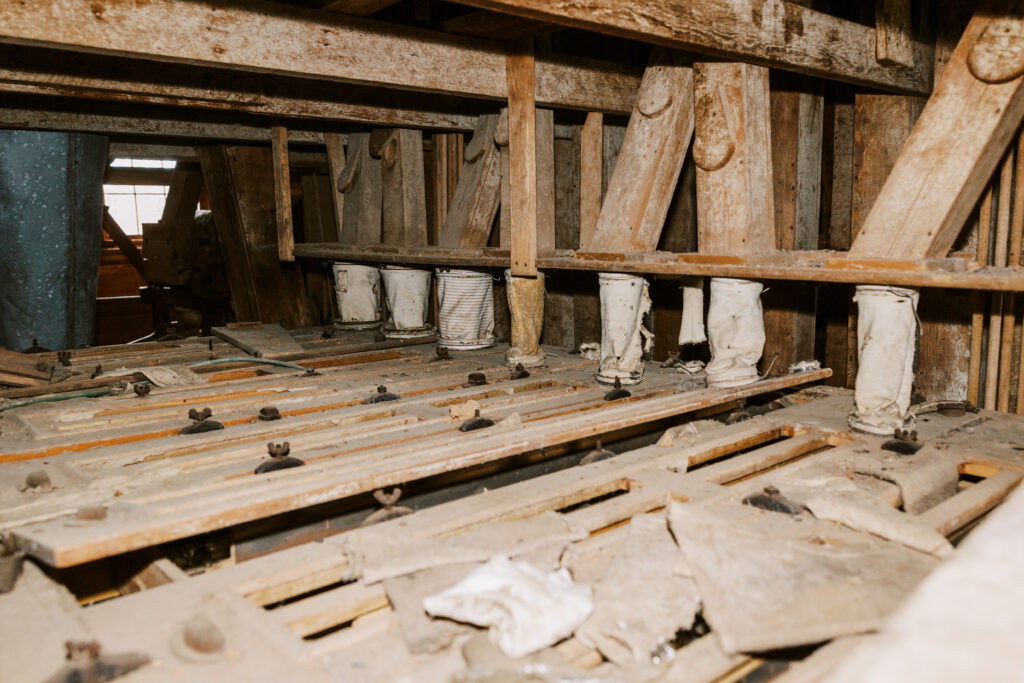The Roller Mill Process
The Enterprise Roller Mill, also known as the Braselton Grist Mill, had two main areas of operation: the roller mill, which specialized in producing flour, and the grist mill, which made cornmeal as a secondary product.
Wheat was delivered to the mill in burlap bags and stacked on the concrete “porch” at the front of the building. If it rained, deliveries were brought inside for protection. Each customer’s bags were labeled upon arrival to keep their orders separate during the milling process.
In a 2012 reflection, Robert W. Cook Jr., who worked at the mill during the summers of 1939 and 1940, shared memories of arriving at the mill to find the porch covered with orders waiting to be processed.
“We worked from sundown until sunup each night, starting at midnight Sunday and ending at midnight Saturday,” Cook recalled. “We were paid 50 cents each per night. I saved $5.00 and opened a bank account at the bank in the [Braselton Brothers] store. I thought I was on the way to real wealth.”
Trap door
Wheat’s journey from the field to flour began at the trap door near the mill’s original entrance. This door led to a large holding bin where the wheat was initially stored.
The miller often processed several orders at the same time. To keep them separate, sliding boards were placed between the batches. Each batch was then released into a wooden trough that held a cupped belt system. This system carried the wheat to the second floor to be cleaned.

pulley ropes
The miller had the important job of keeping each customer’s order separate as it moved through the mill. He used a system of pulley ropes hanging at eye level on the first floor to control this process. Each rope operated a wooden “flip valve” that directed individual batches of wheat or flour to the correct location.
Historians note that the miller didn’t rely on a written “cheat sheet” to track each order’s progress. Instead, he memorized every stage of the milling process for each batch.
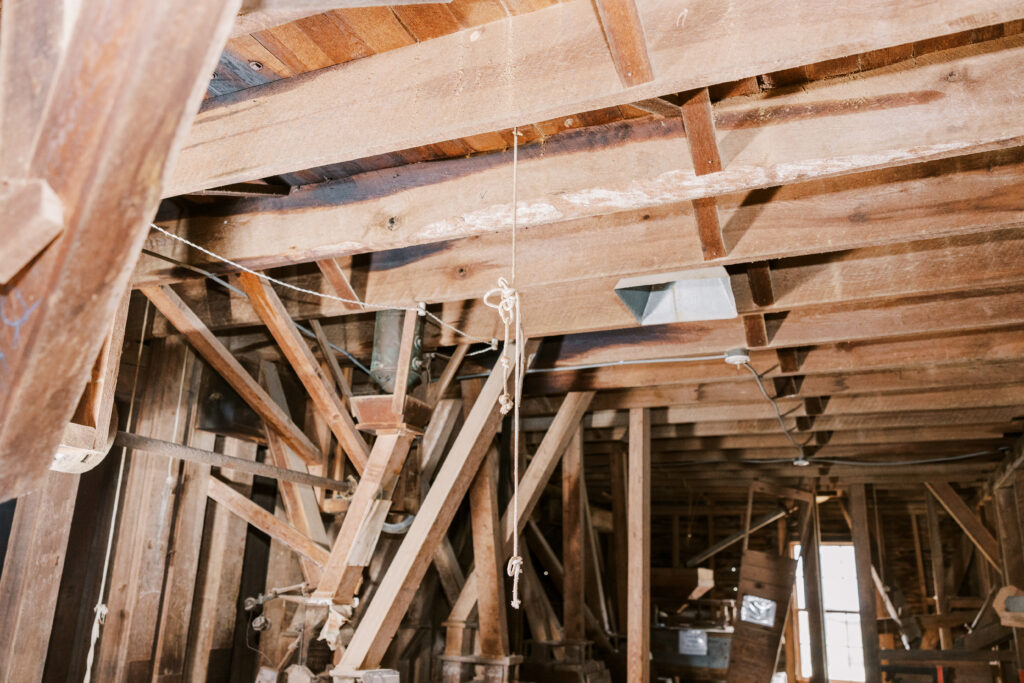
cupped belt line
Grain traveled between the floors of the mill using cups and chutes. The cups, made of metal or wood, were attached to a moving belt line that carried the grain upward. Chutes relied on gravity to move the grain downward.
The mill had separate systems for wheat and corn to ensure each was processed correctly.
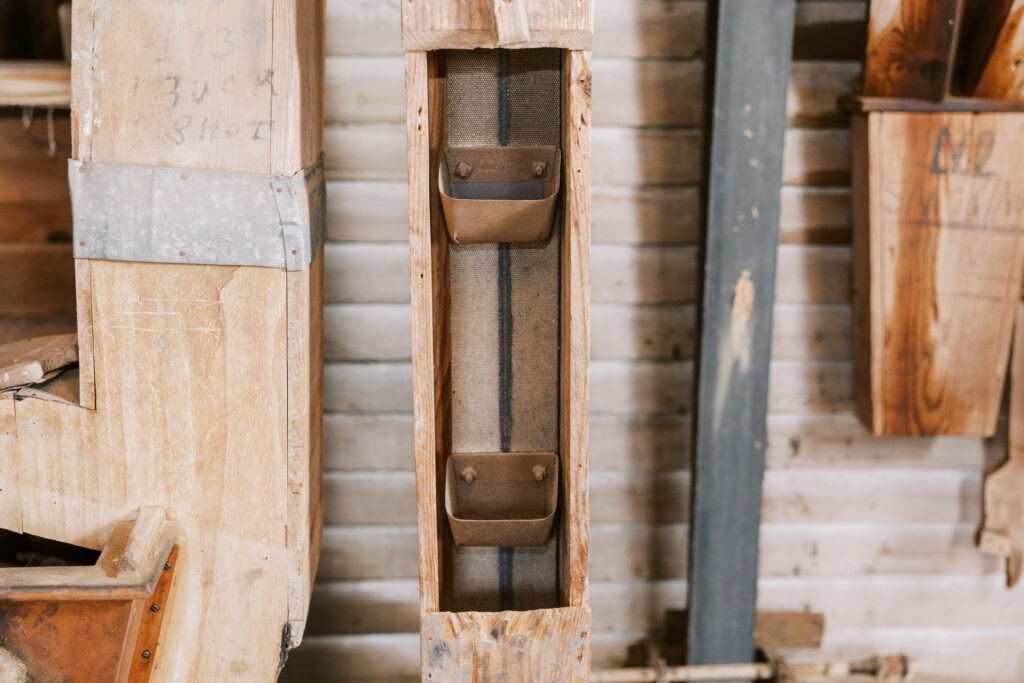
the roller mills
The roller mills were the “heart” of the milling process. These machines crushed wheat kernels into raw flour and bran (the outer layer of the wheat kernel) by passing them between two cylindrical rollers, usually made of steel or porcelain. The Enterprise Roller Mill had four of these machines, each equipped with two sets of rollers.
Wheat dropped into the roller mills from a storage bin directly above them on the second floor. All eight sets of rollers worked at the same time to process each order.
After grinding, the raw flour and bran were transported to the third floor to be separated.
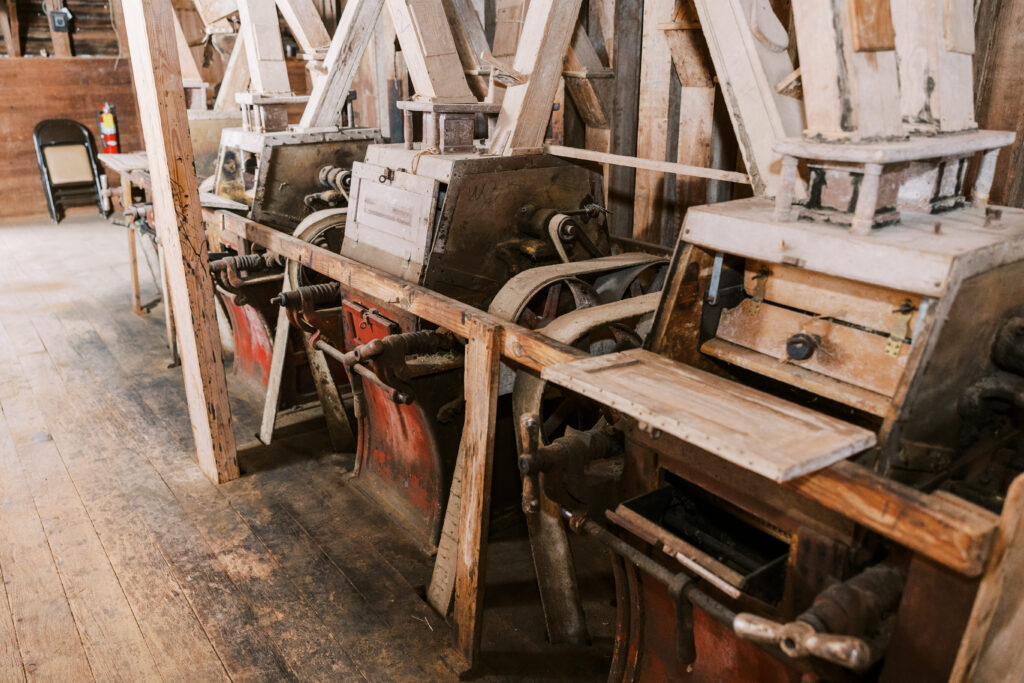
bagging machines
Raw flour, bran and self-rising flour were bagged using several different machines. Cotton flour bags from the Braselton Brothers Department Store were attached to a metal tube that the flour funneled through as it entered the machines from storage bins on the second floor. As the flour filled the bags, its weight was measured by built in-scales. When the bag reached the correct weight—typically 25, 50 or 100 pounds—the machine automatically shut off, and the operator sewed the bag shut.
Bran, which was mainly used as animal feed, was bagged in the original burlap sacks provided by customers when they first brought their wheat to the mill.
After bagging, customers had two options: They could take the bagged flour and bran as-is and pay for the milling service, or sell part or all of the product to the Braselton Brothers Department Store for store credit.
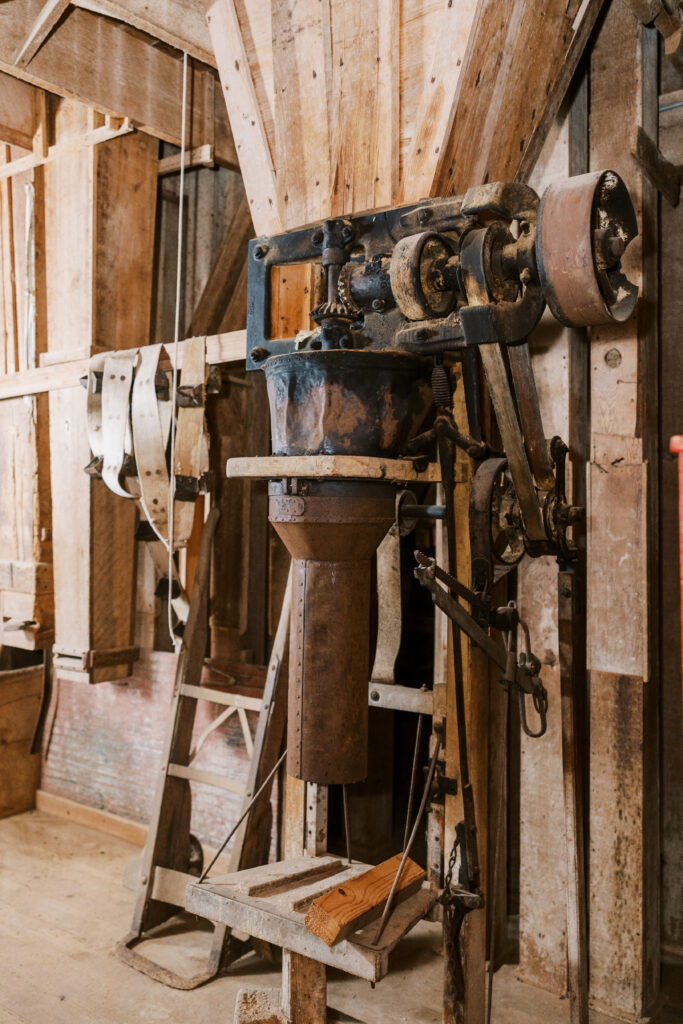
self-rising mixer
The Enterprise Roller Mill was one of the last mills in Georgia to produce self-rising flour. Made by mixing raw flour, baking soda and salt, self-rising flour allowed bakers to prepare cakes and biscuits without needing additional ingredients to make the dough “rise.”
After sifting on the third floor, the fresh flour was sent to a storage bin with a built-in scale on the second floor. Once the correct amount was measured, the flour fell into this large mixer to be combined with baking soda and salt. The mill’s recipe was one cup of baking soda and a pinch of salt for each cup of flour.
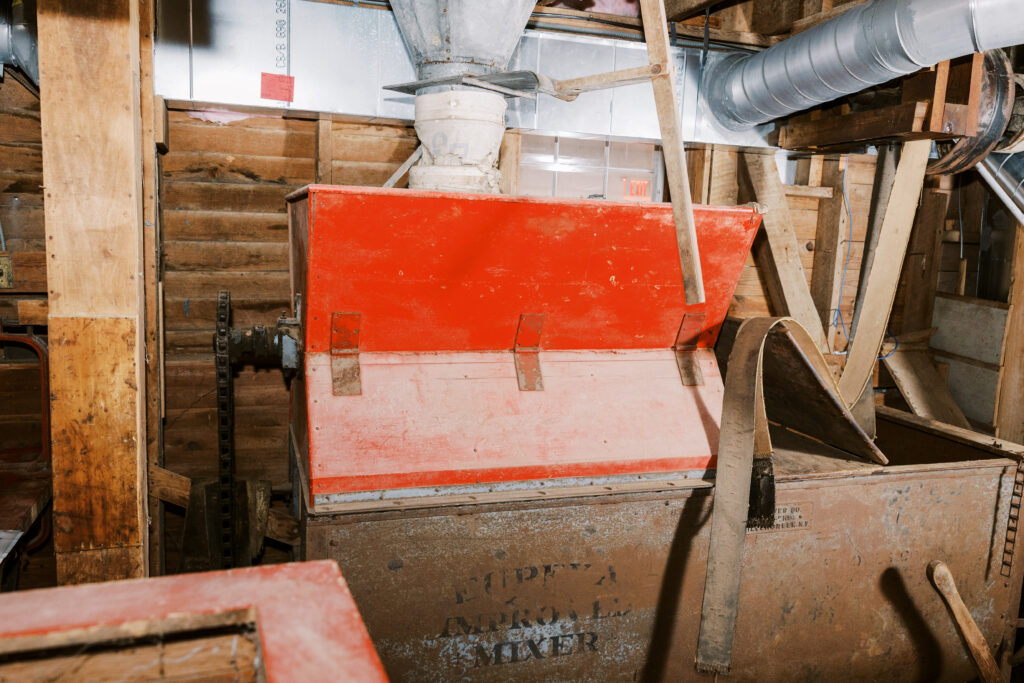
storage bins
These storage bins played a key role in managing wheat and corn during the milling process.
Wheat was first held in a bin behind a trap door on the first floor. It was then moved along a cupped belt line to a bin located directly above the roller mills, where it was ground into flour. After grinding and separating, the bran (the outer layer of the wheat kernel) was sent back to one of these bins for bagging, while the raw flour traveled to a separate bin after being sifted on the third floor. Self-rising flour was mixed on the first floor and later stored here before being bagged.
Corn followed a similar process. After being shucked, shelled and separated, the corn kernels were transported by a cupped belt line to a storage bin above the mill stones. Once ground, the cornmeal was returned to a bin and stored until it was ready for bagging.
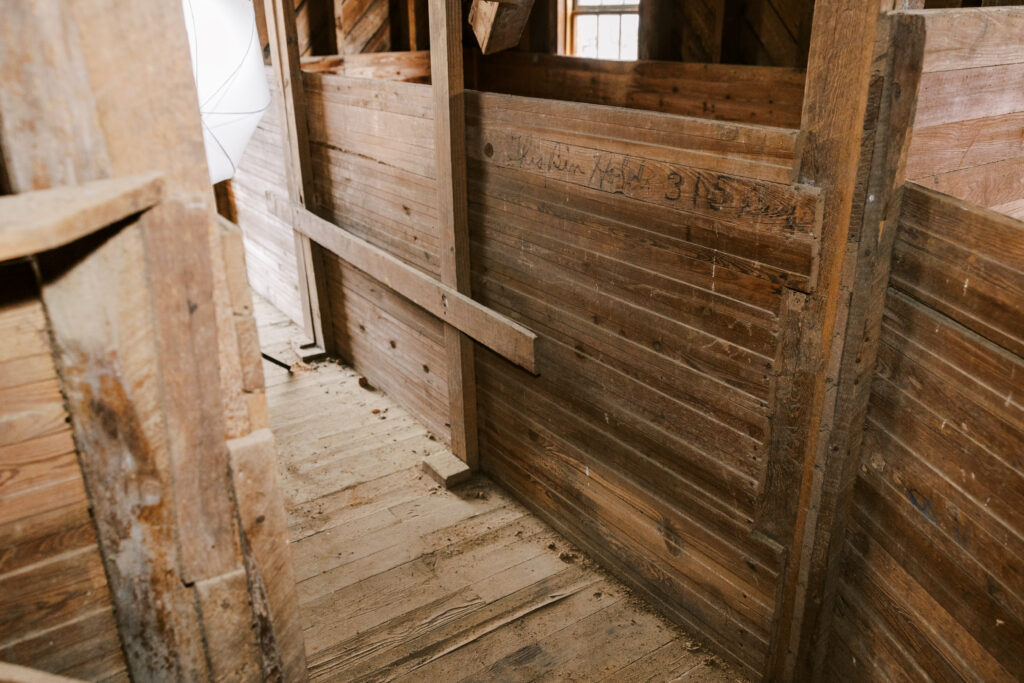
screen
Preparing the wheat before milling was essential to ensure a high-quality product. Before the grain entered the roller mills, it was taken to the second floor to be carefully cleaned and conditioned. A screen was used to remove weeds and debris that had been collected from the fields.
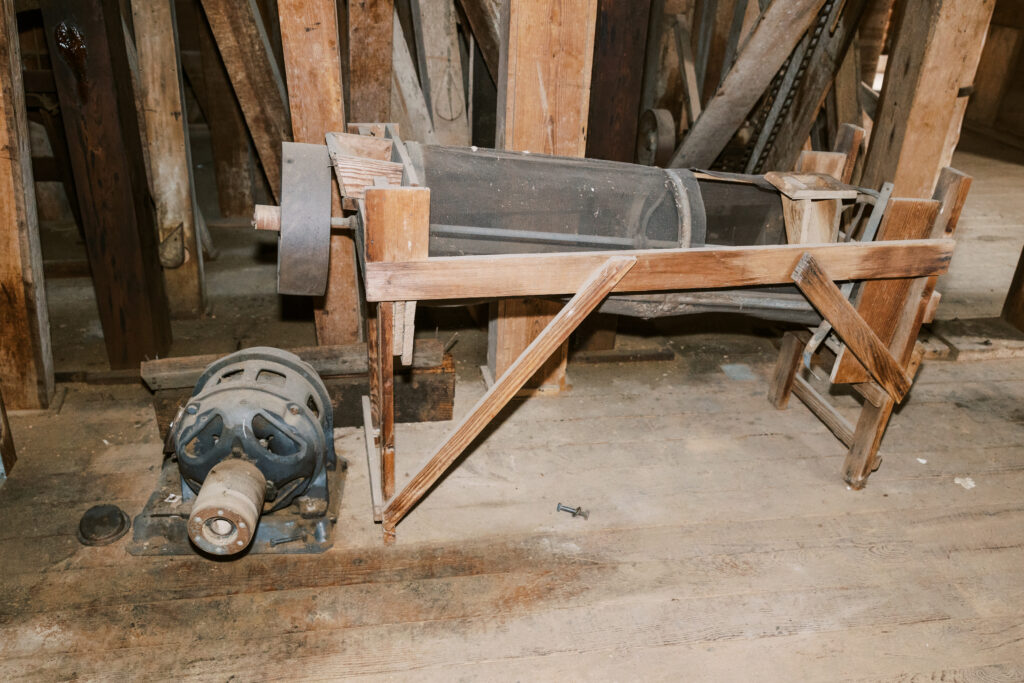
separators
After grinding in the roller mills, raw flour and bran were transported to the third floor, where separator machines divided them. Each separator had rotating spoked wheels covered in an open-weave fabric, which allowed the raw flour to pass through while directing the bran to the opposite end and into a trough routed toward the bran bagger on the first floor.
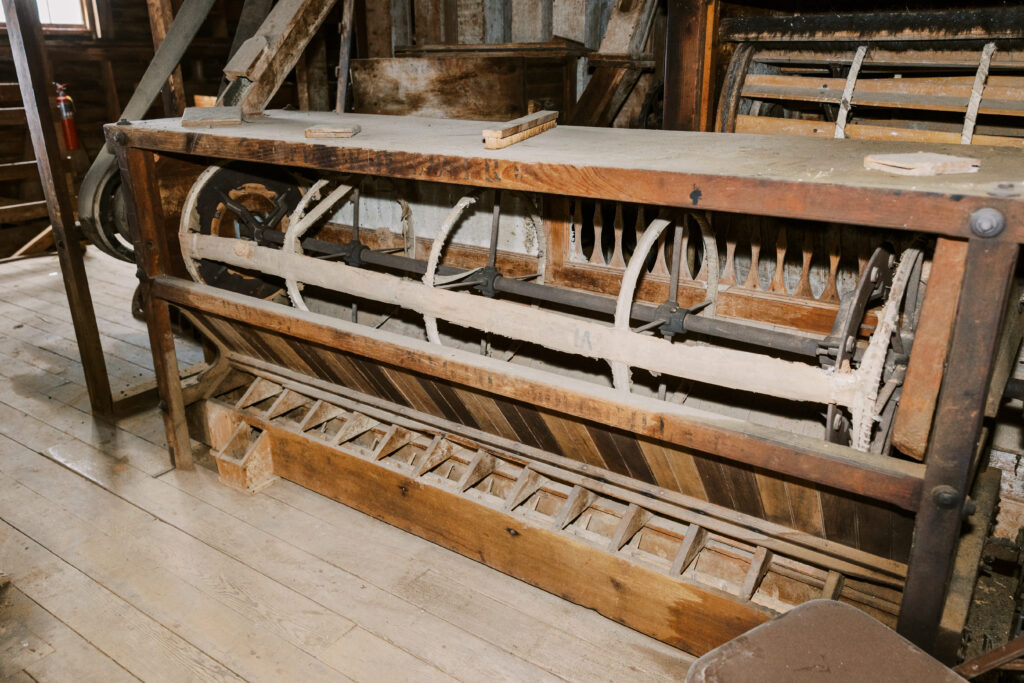
sifter
Once flour was finely ground and separated from the bran, it moved to the sifter. This large rectangular box, measuring 8 feet by 12 feet, had multiple layers of silk fabric that filtered the flour, removing any remaining impurities.
The sifter worked using a rotating motion: Wooden dowels supported the box at its corners, and a power-driven pulley at the bottom caused the box to rotate.
